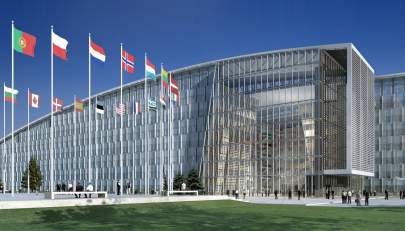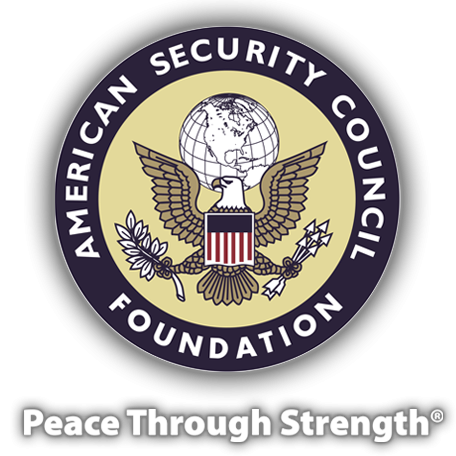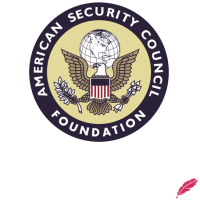NATO’s Next Growth Spurt
By Alan W. Dowd, ASCF Senior Fellow

May 2022—Nothing focuses the mind quite like danger on the doorstep. Vladimir Putin’s brutal, unprovoked war against Ukraine has reminded Europeans that their neighborhood remains a dangerous place, that their sovereignty and borders must be defended, and that NATO is the only organization capable of filling that role. That reality is compelling long-time neutrals to join the Atlantic alliance.
How do nations join NATO?
Contrary to NATO’s critics, NATO didn’t start growing in the 1990s. In fact, NATO has been growing ever since it was born in 1949.
It’s all there in Article X of the North Atlantic Treaty: NATO members may “by unanimous agreement invite any other European state in a position to further the principles of this treaty and to contribute to the security of the North Atlantic area to accede to this treaty.” Thus, Greece, Turkey and West Germany sought membership in the 1950s; Spain in the 1980s; Poland, Czech Republic and Hungary in the 1990s; the Balts, Bulgaria, Romania, Slovakia and Slovenia in the early 2000s; Albania, Croatia, Montenegro and North Macedonia between 2009 and 2020.
Again, contrary to NATO’s critics, NATO’s growth spurts have never been about NATO “expanding” by pushing its way into Eastern Europe; rather, NATO’s growth has always been a function of sovereign nations seeking shelter by pushing their way into NATO. In other words, NATO grows not by conquest but by consent, not by the force of arms of its members but by the desire for security of its aspirants. This crucial distinction is often overlooked by NATO’s critics.
Who’s joining and when?
Sweden and Finland appear poised to apply for NATO membership, perhaps this month or during next month’s NATO summit. However, they might not apply at the same time.
Sharing an 830-mile border with Russia, Finland is reportedly closer to NATO membership than its neighbor Sweden. This is somewhat of a surprise given Finland’s neutrality agreement with Moscow, which kept the Red Army at bay—and Finland nominally independent—throughout the Cold War. That agreement was replaced in 1992 by a treaty of friendship. However, Putin’s beastly assault on Ukraine has drastically altered the political calculus in Helsinki, reversed public sentiment across Finland and accelerated the country’s transformation from neutral to NATO aspirant.
Led by Prime Minister Sanna Marin, Finland is galloping toward NATO membership—a stunning reversal from its position as recently as January. Finland's parliament recently began debating NATO membership. Marin clearly supports it. Finland’s minister for European affairs calls NATO membership “highly likely.”
Swedish Prime Minister Magdalena Andersson “has made up her mind and wants Sweden to join NATO,” according to published reports. And her ruling party issued a statement in April declaring, “When Russia invaded Ukraine, Sweden's security position changed fundamentally.” However, initial plans for the two neighbors to “jump together” have been adjusted, as the Swedish government and populace mull the changes that would come about if Sweden abandons neutrality. Still, key sources say Swedish political leaders want to apply in June.
Whether in June or later—whether together or separate—the entry of Sweden and Finland into NATO seems to be a matter of when, not if. NATO Secretary General Jens Stoltenberg has said Finland and Sweden would be “very much welcomed” in the alliance and would be accepted “in a relative quick way.”
In response to these reports, Putin’s regime unloaded a fusillade of rhetorical and literal military threats against the two Nordic nations, thus confirming the prudence of their move toward NATO. Indeed, the fact that Finland is abandoning Finlandization and racing toward NATO speaks volumes—about NATO and Moscow.
What can NATO expect from these new members?
Sweden and Finland check all the political, economic, military and geographic boxes for NATO membership. As Adm. James Stavridis, former commander of NATO, puts it, “I always say to people in Sweden and Finland: If you want to join NATO, tell us on Wednesday and we’ll have you in by Friday. They're that good.”
Sweden has been a de facto NATO member since the end of the Cold War. With its advanced military capabilities, Sweden has been a key contributor to NATO missions in Bosnia, Kosovo, Afghanistan and Libya, as well as NATO’s training mission in Iraq. In fact, Sweden deployed more troops to the NATO-led mission in Afghanistan than Belgium, the Netherlands, Norway and Portugal (all founding members of the NATO alliance).
Sweden participated in NATO’s high-intensity, large-scale Cold Response exercise this year. In 2021, Sweden hosted the Arctic Challenge exercise, which brought together warplanes from the U.S., Sweden, Finland, Denmark, Germany, the Netherlands and Britain. In early 2020, U.S. B-1B bombers joined Swedish fighters in maneuvers over Sweden. In late 2020, Swedish and U.S. warships, Swedish fighter-bombers, and U.S. fighter-bombers carried out combat maneuvers in and above the Baltic Sea. In 2018, U.S. Marines deployed to Sweden for joint amphibious exercises. In 2017, more than 20,000 Swedish and American troops participated in the largest military exercise in Sweden in decades. And the U.S. Navy has tested itself against Sweden’s world-class submarines for years.
Citing Russia’s attacks on neighboring nations and its rapid military buildup, the Swedish government has approved a whopping 40-percent increase in defense spending and deployed troops to Gotland (a Swedish island in the Baltic Sea that would be key to any NATO effort aimed at reinforcing or retaking Estonia, Latvia and/or Lithuania).
Finland’s levels of cooperation and interoperability with NATO may not be as deep as Sweden’s, but they are close. Like Sweden, Finland participated in Cold Response. And as NATO documents detail, Finland has contributed to NATO-led operations in Bosnia (contributing troops to the NATO peacekeeping force), Kosovo (sending troops to support peacekeeping operations that continue to this day), Afghanistan (deploying troops to train Afghan forces from 2002 through 2021) and Iraq (partnering on NATO's training mission). Plus, Finland is a part of NATO’s strategic airlift initiatives; participates in NATO’s Cooperative Cyber Defense Center of Excellence; and provides logistical support to NATO forces based in or transiting through Finnish territory.
In short, if/when Sweden and Finland join NATO, the alliance will gain two net exporters of security. This will be especially evident in the Baltic and Arctic regions. In the former, Finland and Sweden will significantly improve NATO’s strategic depth and resupply capabilities vis-à-vis Estonia, Latvia and Lithuania. In the latter, the alliance will benefit from enhanced awareness of, and capabilities along, NATO’s northern flank. Putin has been militarizing the Artic for more than a decade.
Who else?
Topping the list of aspirants after Sweden and Finland is Bosnia, which has been given a Membership Action Plan—a kind of checklist or pathway toward NATO membership. Nearby Croatia, Montenegro, Slovenia and North Macedonia—all former Yugoslav republics—are already NATO members.
In 2008, NATO promised both Ukraine and Georgia eventual membership in the alliance. That seems a remote possibility as Russian bombs fall on Ukraine and Russian troops occupy parts of both countries. Still, NATO's door must remain open to these orphan neighbors—even if their entry is years away—lest NATO’s leaders void Article X and grant Putin veto authority over their decisions.
Ireland, a longtime neutral that has resisted joining military blocs for decades, has seen public support for NATO membership jump to 48 percent—with 39 percent opposed. That’s a 14-point increase in support for NATO membership since February 2022. Recent incidents involving Russian warships conducting exercises near Irish territorial waters also are contributing to the pro-NATO shift in Ireland. Ireland has participated in NATO-led missions in Bosnia, Kosovo and Afghanistan.
Tiny Kosovo—which, with NATO’s help, tore itself away from Serbia in 1999—is pushing for NATO membership. Although Kosovo is recognized by 117 nations and has strong NATO and EU support, it is not a member of the UN. It also faces ongoing border issues with Serbia.
NATO created an assistance program for Moldova in 2015; opened a liaison office in Moldova in 2017; and is helping Moldova with institutional reforms. With Russian troops occupying eastern Moldova—something Moldova bitterly opposes—the likelihood of NATO membership seems low. But given that Moscow has signaled its intent to link Russian-occupied Ukraine with Russian-occupied Moldova, that could change the calculus in NATO and Moldova.
What would Reagan say?
Even after the Cold War was won, President Reagan recognized the enduring importance of NATO. Ever the visionary, he described NATO in 1992 as “an antidote to chaos,” declared that “room must be made in NATO for the democracies of Central and Eastern Europe,” and called on allied leaders to “extend NATO protections and the NATO framework to those who desire to be part of our alliance.”
NATO will soon answer that call in Sweden and Finland.











